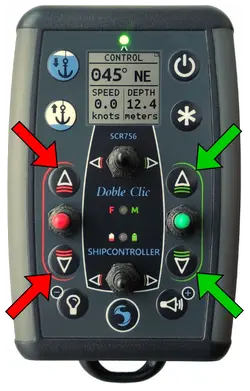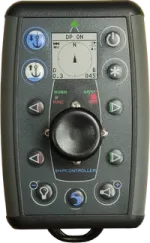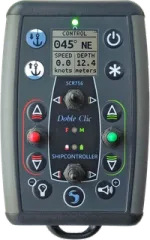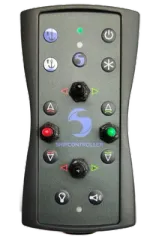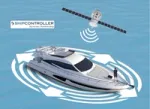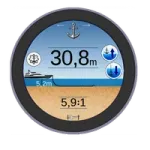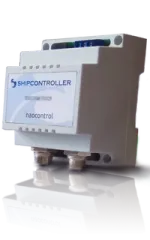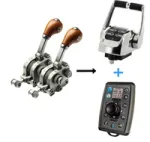Shipcontroller DockerOne Overview
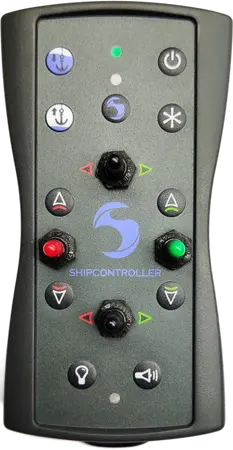
The Shipcontroller DockerOne remote control is the basic model in the range of remote controls from the Shipcontroller system. Despite its simplicity, it includes all the essential functions to assist with docking and anchoring maneuvers:
- Dual-speed engine control via control levers, with independent buttons for the second speed (if available).
- Control of bow and stern thrusters via control levers.
- Control of up to two anchor windlasses.
- Control of the horn and deck lights.
- Button to activate engine control (if required).
- Function selection button to choose the second anchor windlass.
It also inherits some of the key features of the Shipcontroller system, such as its robust bidirectional radio system with encryption, which allows for secure and powerful communication, ensuring constant and smooth data exchange with the boat’s systems. This enables, for instance, the remote control to alert you with vibration and light signals if it detects a loss of engine control.
The DockerOne remote can also be used as a backup remote in systems with EZVector or DockerPro remotes, thanks to its concurrency control function, which prevents two remotes from having control simultaneously.
Although the DockerOne can operate with almost any propulsion configuration (except in IPS mode), if your boat has engines that support proportional control and/or bow/stern thrusters with proportional control, the best option is a EZVector or DockerPro remote, which allows you to fully benefit from the advantages of proportional thrusters.
Technical Features Summary

The DockerPro remote control stands out for its robust design and high-quality components, ensuring reliable operation even in demanding conditions. Below are its key technical features:
- Encrypted bidirectional radio system using the IEEE 802.15.4 protocol, robust and resistant to interference. Standard approved for worldwide use.
- High-quality control levers with a long service life, in an easy-to-replace module, for controlling engines and bow and stern thrusters.
- High-quality mechanical buttons with a long service life. (Does not use membrane keypad).
- Independent buttons for the second speed of engine control.
- Rechargeable LiPo battery. Wireless charging, QI standard.
- Vibration motor for notifications and alarm signaling.
- Water-resistant remote control, IP65 rating.
List of Features
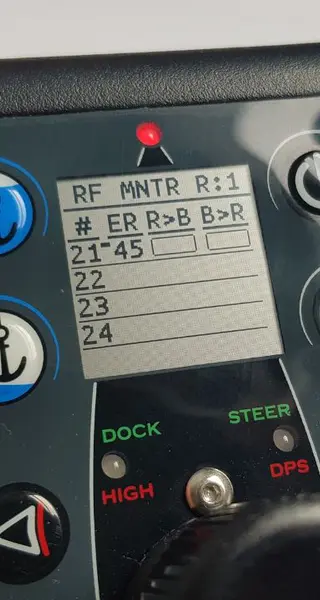
Shipcontroller uses a bidirectional radio communication system based on the standardized IEEE 802.15.4 protocol in the 2.4GHz band, offering numerous advantages:
- The bidirectional radio allows for continuous dialogue between the remote controls and the boat's transceivers. The radio link is permanently monitored, and the remote will immediately alert you in case of a radio link loss, loss of engine control, or other events or incidents.
- The 2.4GHz band and the 802.15.4 protocol are worldwide approved, unlike the 833MHz and 915MHz systems, which have significant regional restrictions. This means you can use your Shipcontroller system globally without legal limitations.
- Although it uses the same radio band as WiFi, the radio channels are different (there are 16) to avoid potential interference.
- It provides robust and reliable communication thanks to the DSSS (Direct Sequence Spread Spectrum) technique:
- It spreads the signal over a wider frequency band than necessary, distributing the energy across a broader spectrum, making it more resistant to narrowband interference.
- The signal is modulated using pseudo-random sequence codes. Only the receiver that knows this sequence can demodulate and recover the signal, reducing the possibility of interference or signal corruption.
- It offers an adequate data transmission speed to support a virtually unlimited number of control channels and the telemetry of navigation data.
- It supports point-to-point and multipoint configurations, allowing the implementation of the Shipcontroller NET system with multiple radio nodes and multiple remote controls.
- It supports 128-bit AES encryption for secure communications.
Each Shipcontroller system has a unique set of keys and identifiers, making it very difficult for the radio system to be intercepted: there are 10³⁸ possible keys.
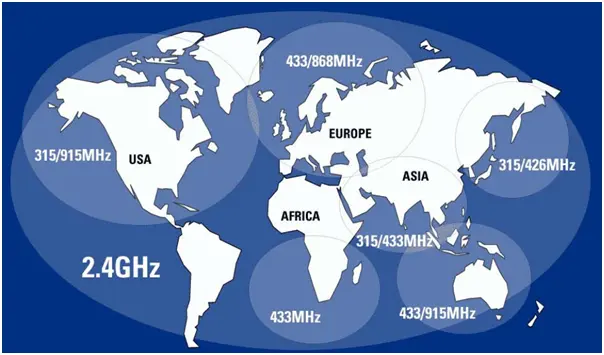

All the Shipcontroller remote models feature an internal LiPo battery and a wireless charging receiver that operates under the QI standard, which is widely used by many smartphones. This means you can use the Shipcontroller charger to charge your QI-compatible phone, or use a smartphone QI charger to charge your Shipcontroller remote.
This compatibility allows for seamless charging experiences, ensuring that your remote is always ready for use without the need for specific charging cables. Whether on the boat or at home, users can easily charge their devices using common QI wireless chargers, enhancing both convenience and efficiency.
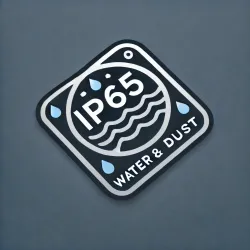
IP65 is a rating defined by the International Electrotechnical Commission (IEC) under the standard IEC 60529. It is used to classify the degree of protection provided by enclosures for electrical equipment against dust and water. The "IP" stands for "Ingress Protection."
- 6: The first digit indicates protection against solid objects like dust. A rating of 6 means the enclosure is completely dust-tight, offering full protection against dust ingress.
- 5: The second digit indicates protection against liquids. A rating of 5 means the enclosure is protected against water jets from any direction. However, it is not fully waterproof, and prolonged submersion would not be covered.
In summary, IP65 means the device is fully protected against dust and can withstand low-pressure water jets, but it's not designed for full submersion in water.
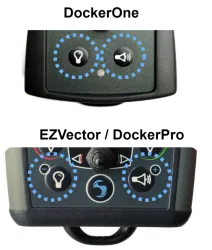
All Shipcontroller remote controls include buttons for activating the horn and deck lights.
The siren activation button is momentary, meaning it will sound the siren as long as the button is held down.
On the other hand, the deck light control function is toggle-type: the control output toggles each time the button is pressed. This toggled output can be used to turn the deck lights on and off, or for other purposes.

